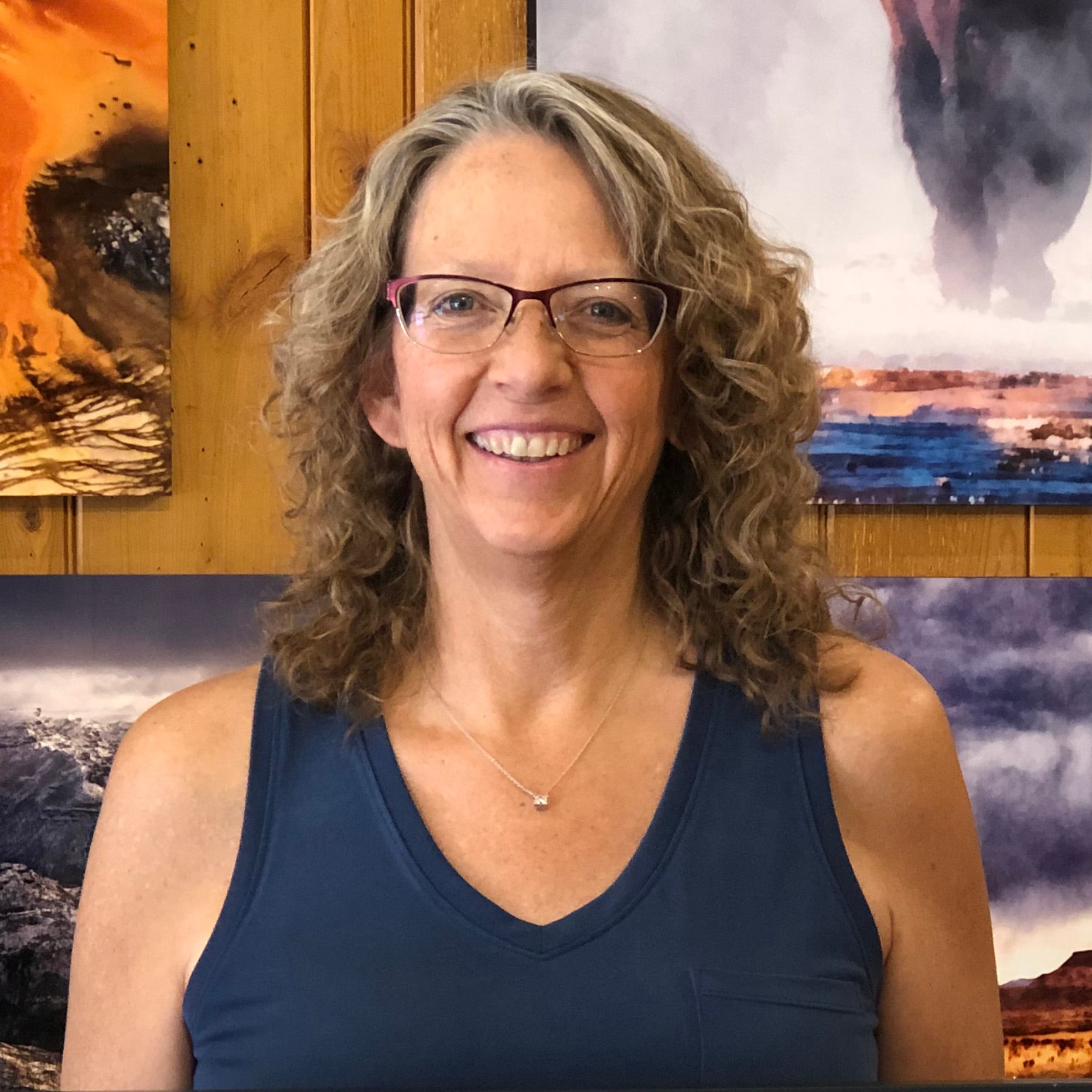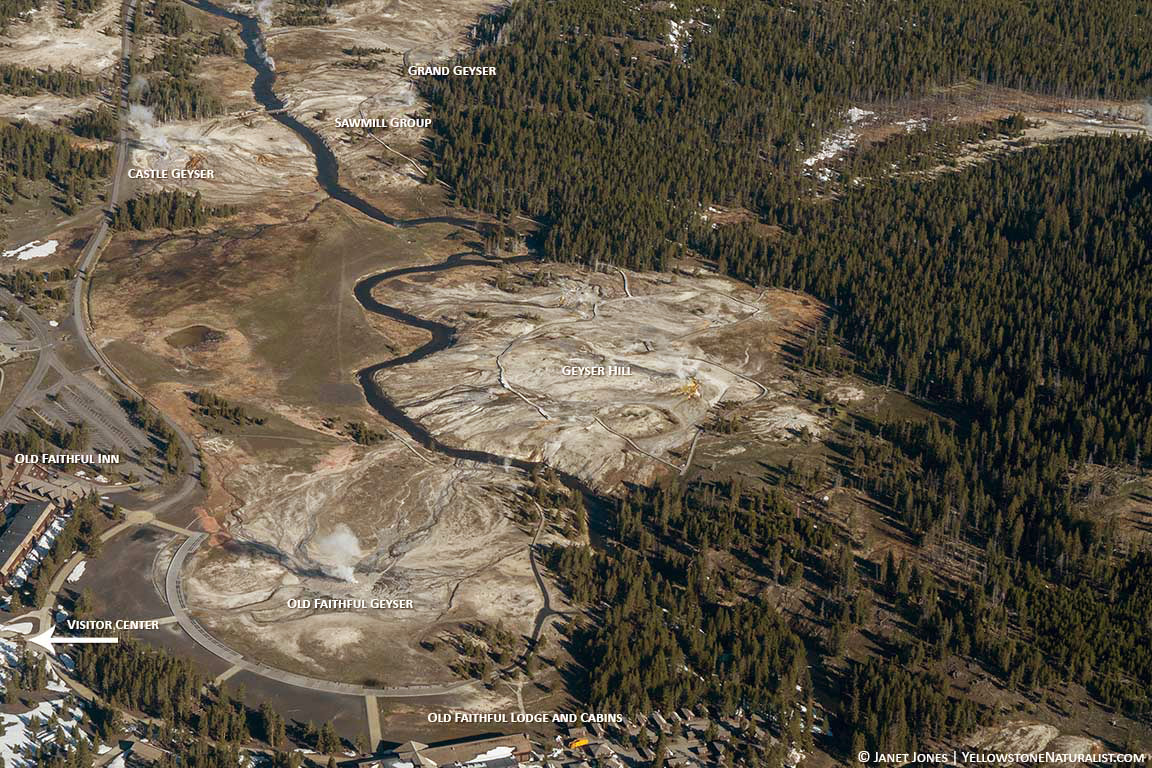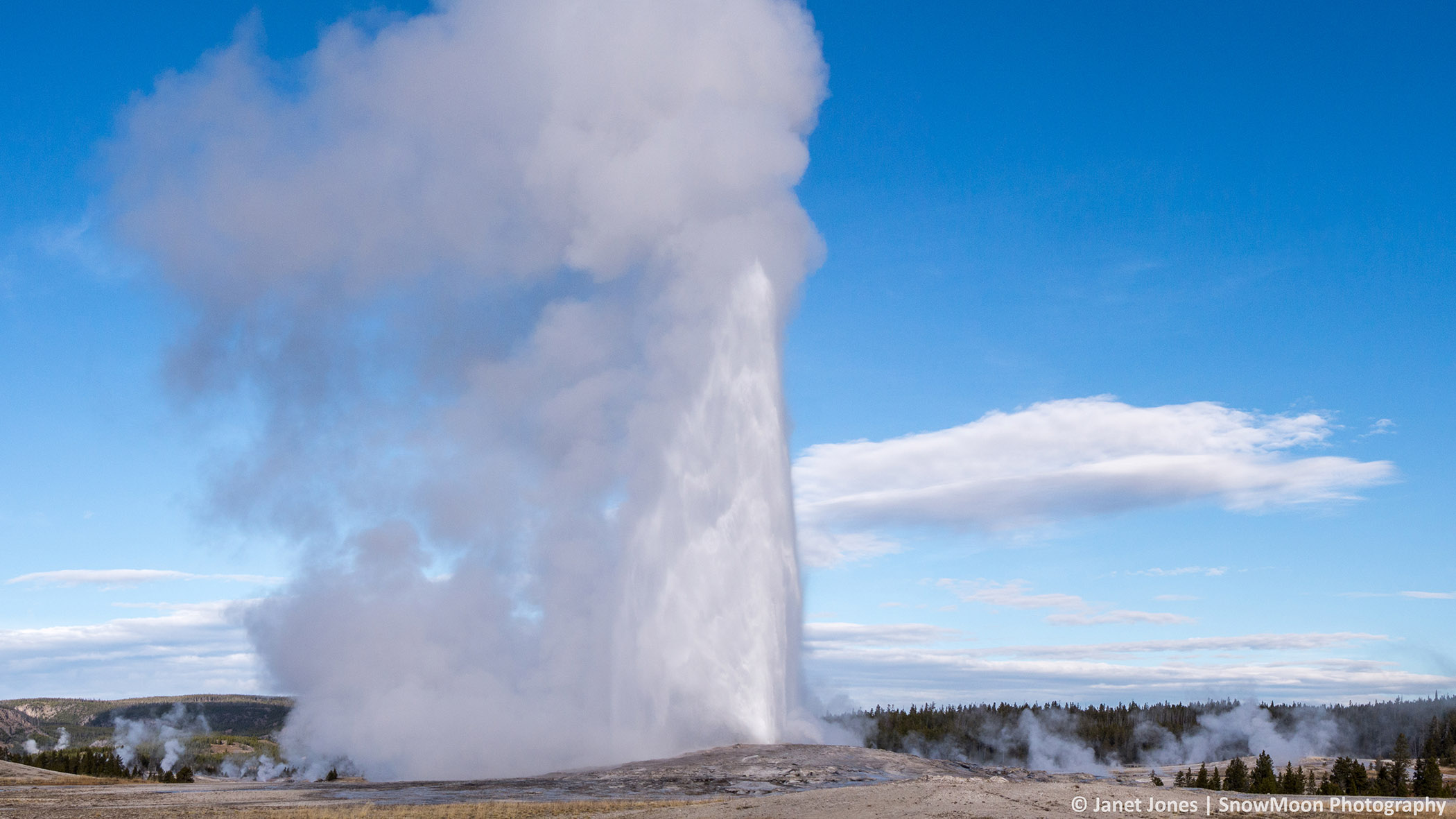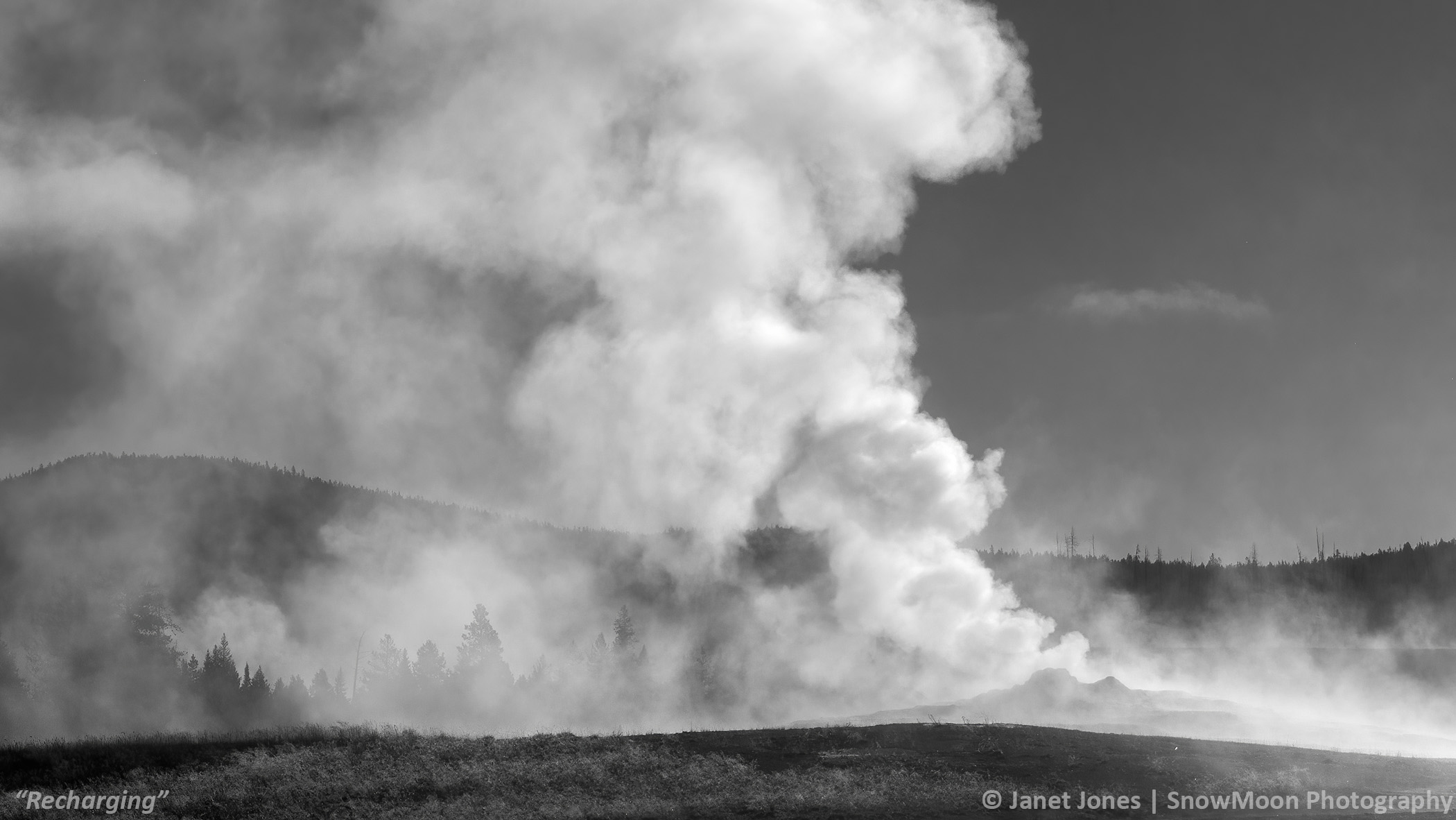Get to know Old Faithful Geyser: Still Amazing after 150 Years
UPPER GEYSER BASIN
Yellowstone’s Upper Geyser Basin is one of Earth’s most unique pieces of land. It’s home to hundreds of geysers – at least two-thirds of the world’s geysers – in this small area. The highest concentration of large geysers is in the Upper Geyser Basin, where you find Old Faithful.
For geysers to exist, you need a special environment that includes heat, water, and geology that provides a plumbing system. We have that in Yellowstone.
OLD FAITHFUL GEYSER
Old Faithful is the star geyser of the world. If people from the far reaches of the world don’t know much about the American West, they do know about Yellowstone and Old Faithful.
Beneath the surface, geologists have made great strides in their understanding of how Old Faithful works. Through ground-penetrating radar, they have determined the location of a water chamber that allows a portion of it to recharge its pressure for eruptions. Old Faithful’s water is filled with water from even lower water chambers. With increasing technology, it will be interesting to watch what else they learn in the future.
You can watch Old Faithful on a webcam. The webcam operators know the thermal features well and zoom in on them from time to time, making sure they catch the next eruption. Predictions are posted when the Visitor Center is open. You can also find a prediction and the time of the last eruption on Geyser Times.
BEFORE AN ERUPTION
If you know when the last eruption occurred, add an hour and a half to that and give yourself a “window” of 10 minutes on either side of the time you just determined. This gives a taste of “geyser gazing” – watching for behavior of a pool, or in this case, a rock pile, to change. Like many geysers, Old Faithful has some pre-play action where it looks like it might be starting. Splashes reaching above the geyser cone give everyone watching hope, and then disappear. However, this means things are getting ready. Old Faithful’s eruption often happens within 10 minutes of the first pre-play splash.
With many geysers (Old Faithful included), the water rises through a crack now sealed with silica to create a tube in the rock that often has a constriction. This is the plumbing system. If a steam bubble is large enough, it will push the water above it up and out. That’s your pre-play splash. There might be quite a few of these splashes before one of them is the real eruption which happens when a much larger area turns to steam, pushing out all the water in the tube above it.
AN OLD FAITHFUL ERUPTION
The eruption starts like a pre-play splash, but the water column is sustained and slowly climbs in height. The column of water rockets to a full height of about 125-150 feet. It holds for a brief 20 to 30 seconds, which is your chance to get the best photos. Then the water descends to a lower height where Old Faithful will play out for the rest of the 3-4-minute eruption.
At this point, rangers and camera operators watch to see how the eruption ends. If it abruptly stops and lasts less than 3 minutes, that’s a “short” eruption. If it slowly dwindles out of sight and takes longer than 3 minutes, it’s a “long” eruption. This is important in determining the prediction for the next eruption.
PREDICTING OLD FAITHFUL
Park rangers regularly calculate averages for eruptions to ensure that at least 90% of the eruptions fall within the prediction window. If they don’t reach that percentage, they either need to adjust the time allowed between eruptions or adjust the window of opportunity. Only a few geysers are regular enough to meet this requirement, allowing the Park Service to issue predictions.
While the next eruption can be predicted, it’s not a true prediction. If it were, we would have a longer-term schedule for Old Faithful and could tell you when to arrive to see an eruption midday in a couple of weeks. Old Faithful is regular, but it is a geyser. Geysers do as they will and always keep us guessing. So, while you have a 90% chance of seeing an eruption in the 20-minute window of opportunity given, there’s still a 10% chance that it could erupt before or after that window.
Park rangers and researchers have learned that Old Faithful has slowed over the decades. When the Washburn–Langford–Doane Expedition discovered Old Faithful in 1870, they experienced an hour between eruptions. After the Hebgen Lake and Borah Peak earthquakes, Old Faithful now erupts about every 94 minutes. Each eruption is slightly different; some are taller, some last longer or shorter, yet they are all beautiful. Old Faithful is truly one of the most beautiful geysers in Yellowstone

Janet Jones
Owner, Publisher, Editor
Janet has a rich history in Cody with her grandparents moving here in the late 1930s. Her grandfather started Wyoming Well Service. Janet is a writer, photographer, graphic designer and webmaster. Cody Journal and Cody Calendar blends her skills and talents with her love of the area.



